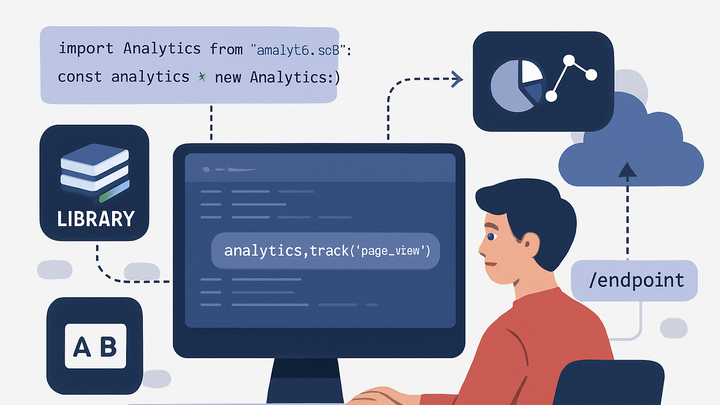Published on 2025-06-28T05:44:41Z
What is an SDK in Analytics?
An analytics SDK (Software Development Kit) is a packaged set of tools, libraries, and documentation that enables developers to integrate analytics functionality into web, mobile, or desktop applications. SDKs simplify the process of capturing user interactions, events, and performance metrics by providing a standardized API and managing low-level details such as network requests, batching, and retries.
By using an SDK, teams can ensure consistency across platforms, improve reliability through built-in offline support, and reduce development effort by avoiding the need to implement custom tracking logic. Popular analytics platforms like Google Analytics 4 (GA4) and PlainSignal offer SDKs that developers can easily embed into their projects. Understanding how SDKs work is crucial for building robust and scalable analytics solutions that provide accurate and comprehensive insights into user behavior. In this article, we explore the definition, components, benefits, and practical implementation of analytics SDKs, including code examples for GA4 and PlainSignal integration.
Sdk
An analytics SDK is a collection of libraries, tools, and APIs that enable developers to capture and transmit event data reliably in applications.
What is an Analytics SDK?
An analytics SDK (Software Development Kit) is a curated package of tools, libraries, and documentation that helps developers integrate analytics capabilities into applications. It abstracts complex tasks like event formatting, network communication, and error handling, allowing teams to focus on business logic rather than low-level implementation details.
-
Components
Most SDKs include a core library, configuration files, and helper functions to track user interactions and events.
-
Platform support
SDKs are tailored to specific platforms such as web, iOS, Android, or desktop, ensuring optimal performance and compatibility.
Key Components of an Analytics SDK
An analytics SDK comprises several essential components that enable efficient and reliable data collection, processing, and transmission from an application to analytics servers.
-
Core library
The primary code module that developers import to access SDK functionality, usually offered in JavaScript, Swift, or Java.
-
Initialization & configuration
Setup routines that initialize the SDK with project-specific settings like API keys, endpoints, and user preferences.
-
Event tracking api
A set of functions or methods to define and record both standard and custom events for analytics.
-
Data transmission layer
Handles batching, retry logic, compression, and secure transport of event data to the analytics server.
Benefits of Using an SDK
Using a dedicated SDK for analytics offers numerous advantages over manual implementations or tag-based solutions. It enhances performance, reliability, security, and developer productivity.
-
Performance optimization
SDKs often batch events and manage asynchronous network calls to reduce overhead and latency.
-
Offline support
Built-in caching and retry mechanisms ensure data is not lost during network outages.
-
Security & compliance
Native SDKs can include data encryption, anonymization, and compliance controls to meet privacy regulations.
-
Consistent versioning
SDKs abstract API changes and maintain backward compatibility, reducing maintenance efforts.
Implementing SDKs: GA4 and PlainSignal Examples
Let’s look at how to integrate analytics SDKs in practice using two popular platforms: Google Analytics 4 (GA4) and PlainSignal. Each offers straightforward installation steps and configuration options.
-
Google analytics 4 (GA4) sdk
Google Analytics 4 provides a web SDK via gtag.js. To integrate, add the following code to your HTML head:
<script async src="https://www.googletagmanager.com/gtag/js?id=GA_MEASUREMENT_ID"></script> <script> window.dataLayer = window.dataLayer || []; function gtag(){dataLayer.push(arguments);} gtag('js', new Date()); gtag('config', 'GA_MEASUREMENT_ID'); </script>Replace
GA_MEASUREMENT_IDwith your unique identifier to start sending pageview and event data automatically. -
PlainSignal sdk
PlainSignal offers a cookie-free, privacy-focused analytics SDK. Include the following snippet in your HTML to begin tracking:
<link rel="preconnect" href="//eu.plainsignal.com/" crossorigin /> <script defer data-do="yourwebsitedomain.com" data-id="0GQV1xmtzQQ" data-api="//eu.plainsignal.com" src="//cdn.plainsignal.com/plainsignal-min.js"></script>Replace the
data-idwith your account ID. PlainSignal will then capture pageviews and custom events without using cookies.
